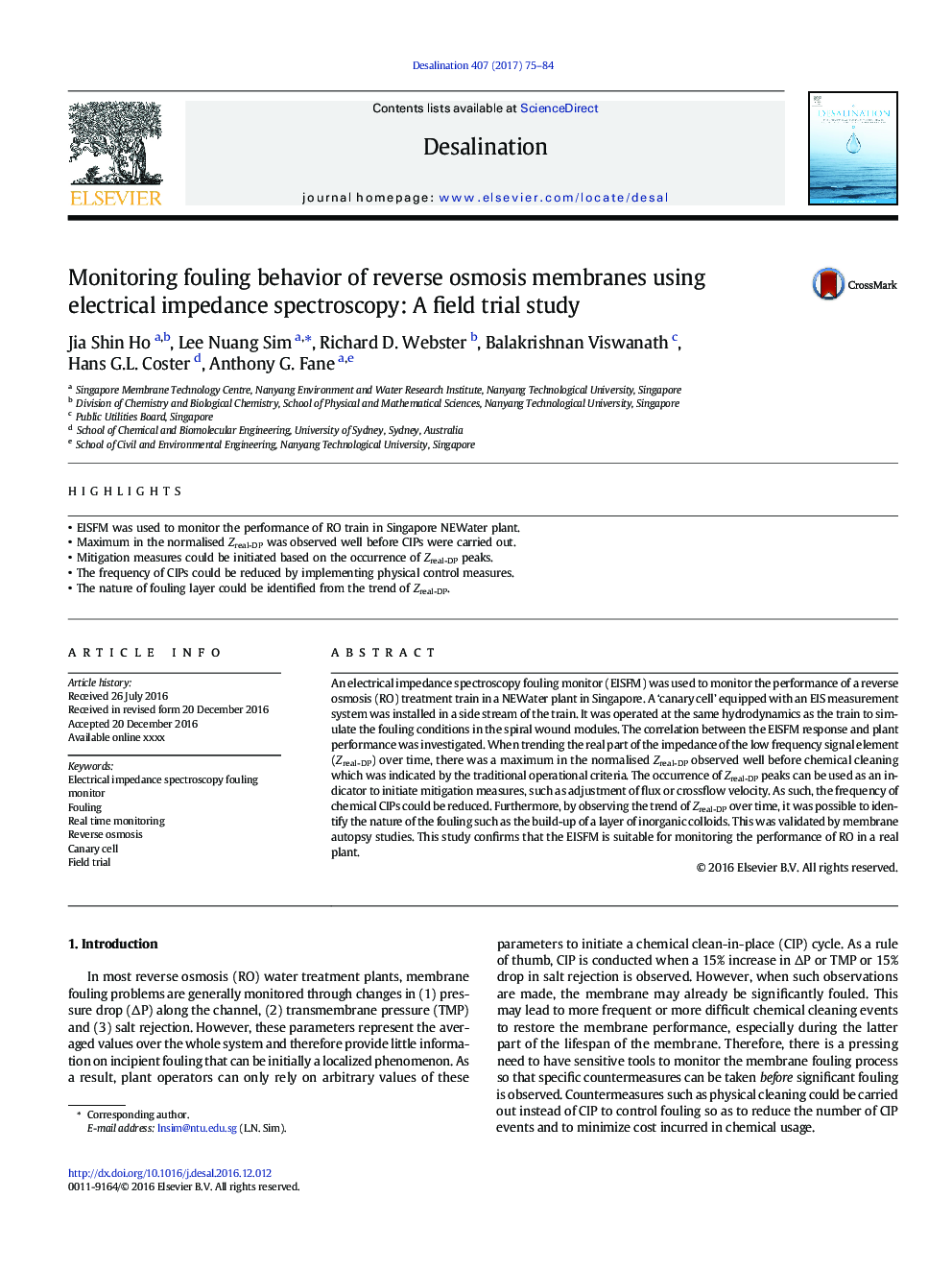| Article ID | Journal | Published Year | Pages | File Type |
|---|---|---|---|---|
| 4987893 | Desalination | 2017 | 10 Pages |
Abstract
An electrical impedance spectroscopy fouling monitor (EISFM) was used to monitor the performance of a reverse osmosis (RO) treatment train in a NEWater plant in Singapore. A 'canary cell' equipped with an EIS measurement system was installed in a side stream of the train. It was operated at the same hydrodynamics as the train to simulate the fouling conditions in the spiral wound modules. The correlation between the EISFM response and plant performance was investigated. When trending the real part of the impedance of the low frequency signal element (Zreal-DP) over time, there was a maximum in the normalised Zreal-DP observed well before chemical cleaning which was indicated by the traditional operational criteria. The occurrence of Zreal-DP peaks can be used as an indicator to initiate mitigation measures, such as adjustment of flux or crossflow velocity. As such, the frequency of chemical CIPs could be reduced. Furthermore, by observing the trend of Zreal-DP over time, it was possible to identify the nature of the fouling such as the build-up of a layer of inorganic colloids. This was validated by membrane autopsy studies. This study confirms that the EISFM is suitable for monitoring the performance of RO in a real plant.
Related Topics
Physical Sciences and Engineering
Chemical Engineering
Filtration and Separation
Authors
Jia Shin Ho, Lee Nuang Sim, Richard D. Webster, Balakrishnan Viswanath, Hans G.L. Coster, Anthony G. Fane,
